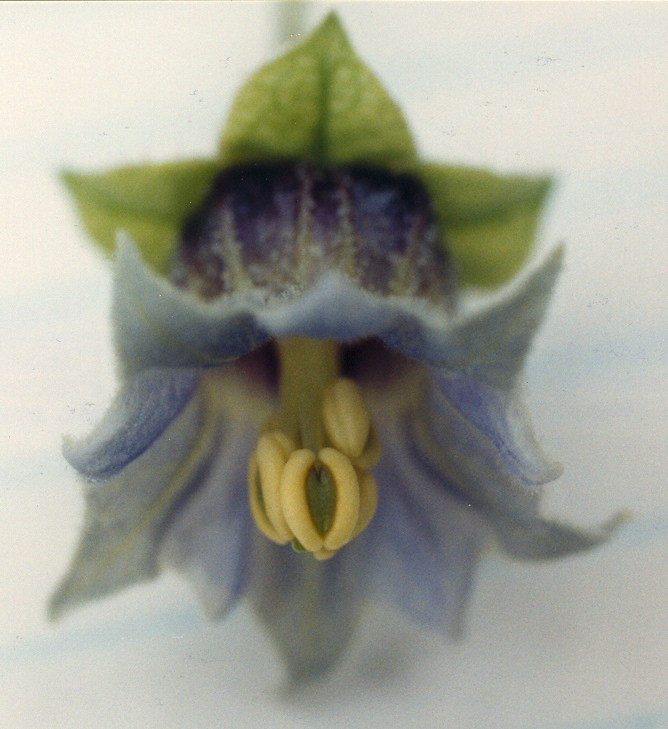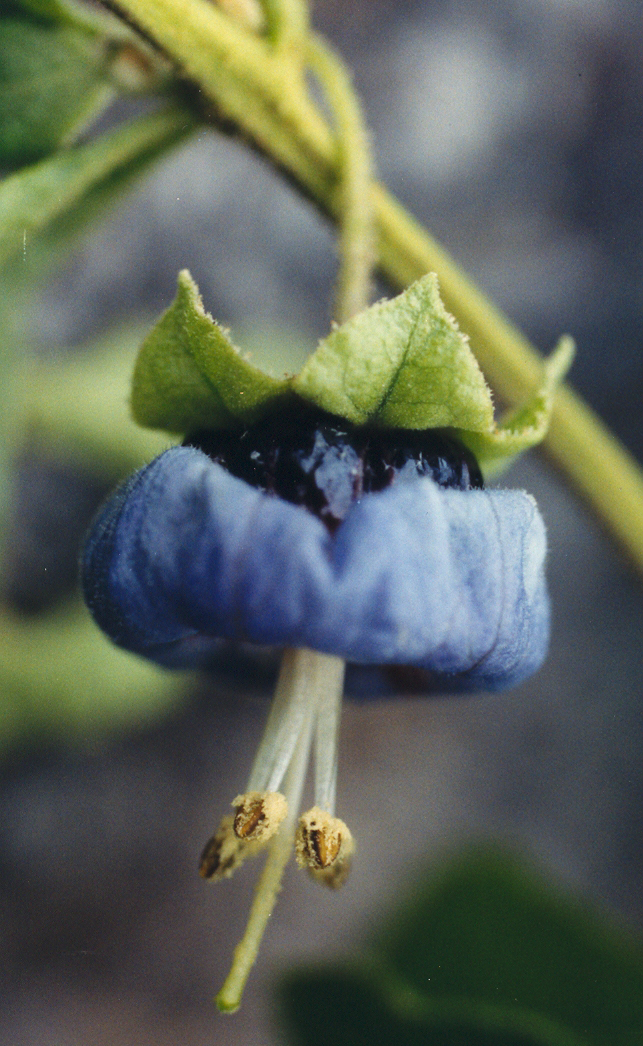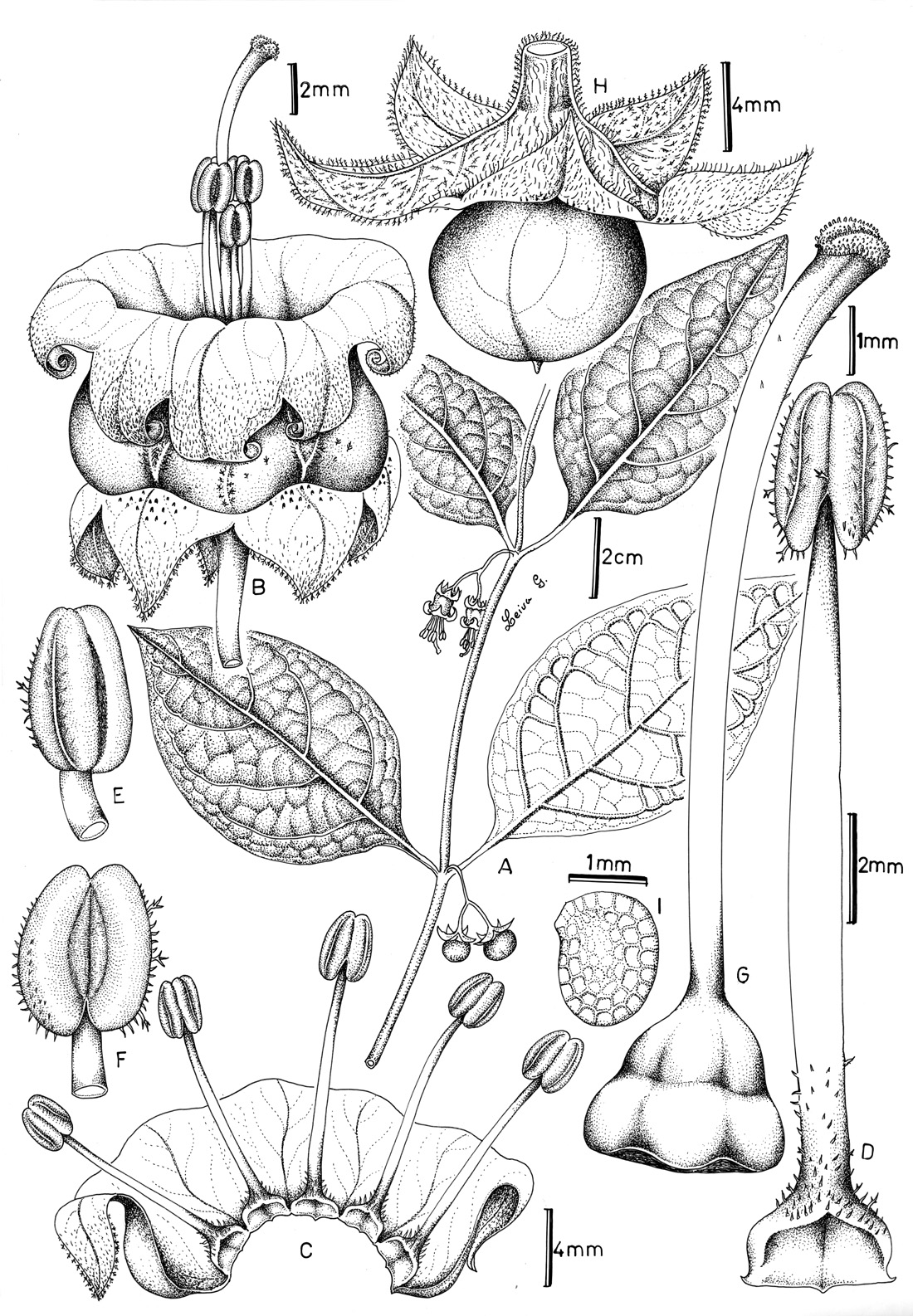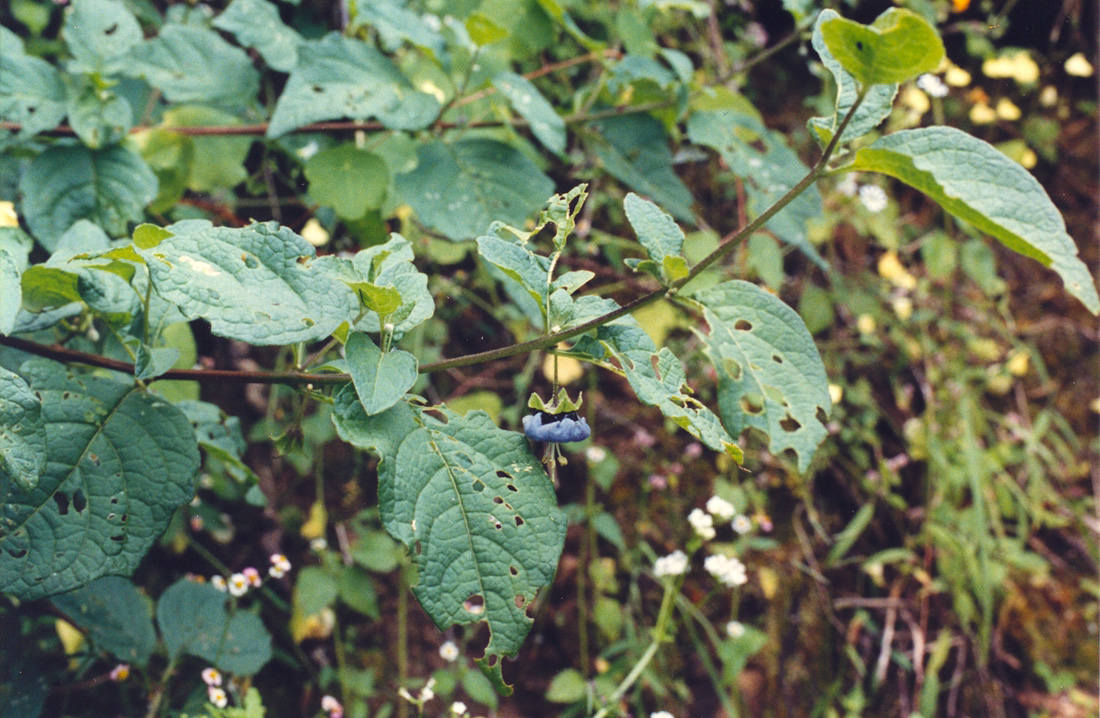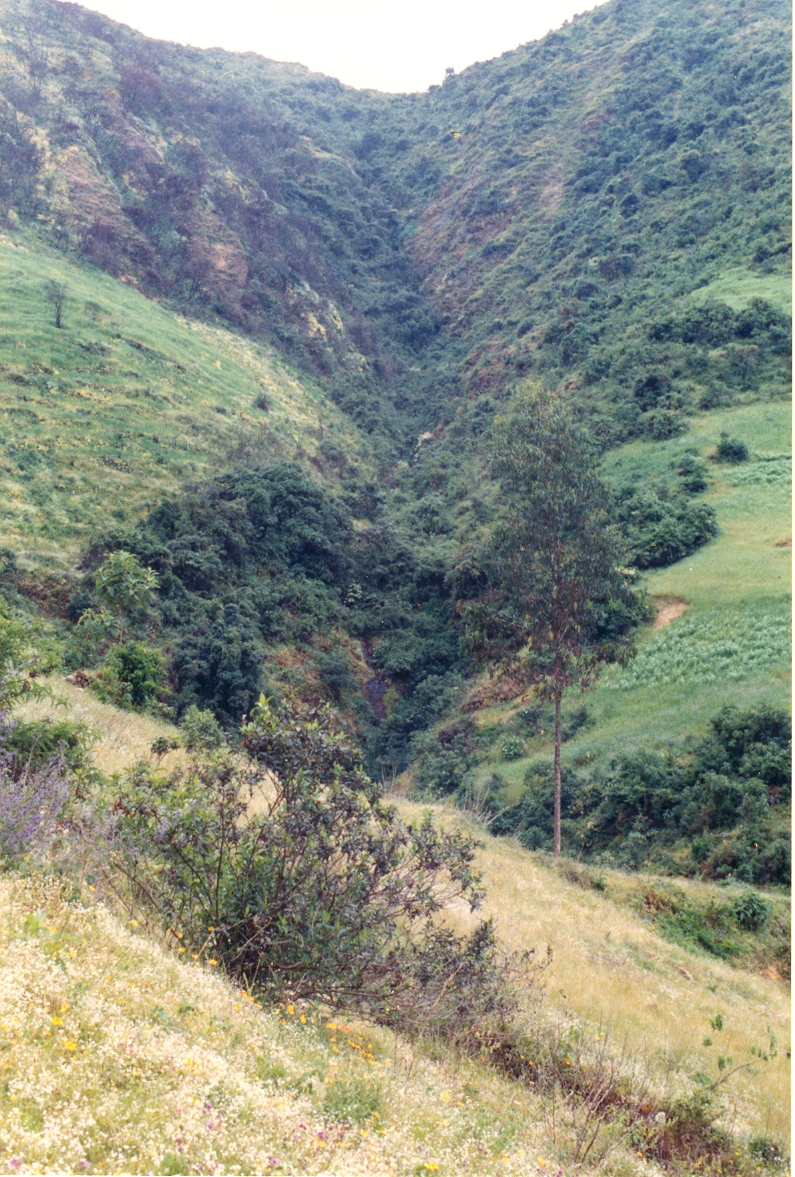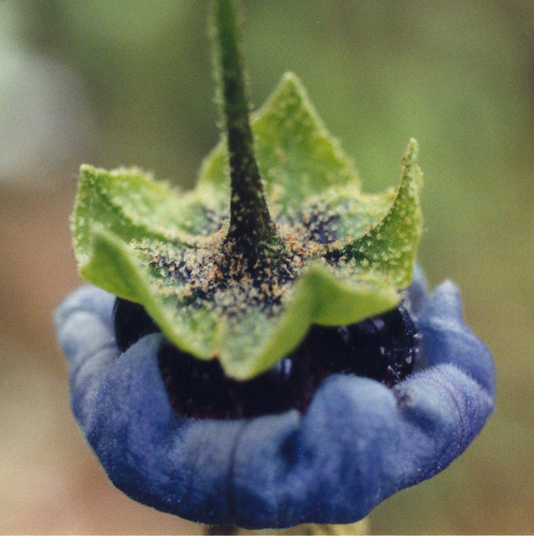| Character |
Description |
Figures on this page |
Habit & Height |
Suffrutescent or shrub, erect or sometimes leaning, to 2.5 m across when leaning on other vegetation |
|
Branches, young |
angulate, green, glabrate with finger or dendritic hairs |
|
older |
woody, to 2 cm in diameter at base, nearly terete, glabrous with lenticels, brown |
|
Leaves, size |
alternate, often geminate, to 11 X 5.3 cm, membranous |
|
| shape |
the blade ovate to elliptical, the apex acute, the base somewhat attenuate, the margin entire |
|
| hairs |
both faces glabrate, the youngest (smallest) leaves with finger or dendritic hairs, the margin sparsely ciliolate on older leaves |
|
| petiole |
to 17 mm |
|
Inflorescence |
axillary, (1)2-(3) flowered; Flower buds dome-shaped at the apex and round in cross section. |
|
peduncle |
1--9 mm, terete, green, sparsely to densely pubescent with finger and branchlet hairs |
|
pedicel |
10--14 mm, terete, sparsely to densely pubescent with finger and branchlet hairs |
|
Calyx at flowering |
green, 15 mm across, the lobes deltoid, adaxially glabrous except for abundant glands, abaxially pilose with both dentritic and less commonly forked or finger hairs and glands, the margin ciliolate |
|
| shape / position when flowering |
reflexed |
2 |
| at fruit maturity |
26 mm across |
|
Corolla color |
the tube bright red-violet,
the limb light blue-purple to off-white |
|
shape and size |
urceolate, the tube 7--9 long X 10 mm wide at base,
the limb completely revolute, 14 mm across |
6 |
lobes/lobules |
10-lobed |
|
|
the tube glabrous within, the abaxial face pilose on veins with dendritic and finger hairs, and abundant glands on the lobes; the limb completely revolute, light blue-purple to off-white, the adaxial face pilosulose with finger hairs 0.2 -- 0.3 mm long having a bulbous terminal cell, the margin ciliate |
|
Stamen length including anther |
11 -- 14 mm |
|
| length stamens exserted beyond distal end of corolla (applicable if corolla has a well-defined tube) |
exserted 6--7 mm beyond the mouth of the corolla |
|
|
yes |
|
| base expanded laterally? |
yes |
|
| filaments |
off-white, pubescent on proximal 20--25% of length with simple unpigmented hairs |
|
| anther color |
yellow prior to dehiscence |
|
| anther size |
1.9--3 mm, sometimes pubescent near sutures |
|
| anther mucronate / mucronulate |
no |
|
| insertion of filament into anther |
|
|
| anthers of a flower open simultaneously? |
|
|
| pollen quantity per flower |
143,500 |
Mione et al. 660, flower collected in wild, not grown for study.
Count by Emmett Varricchio |
| pollen grain size |
|
|
| corona |
no |
|
Stigma |
capitate, shallowly bilobed, dark green, 0.4 mm, exserted 5.5 mm beyond the anthers and 12 mm beyond the mouth of the corolla,
stigma papillae 25--30 µm long |
|
Style |
9 -- 18 mm, green, with a few hairs 0.06 mm long distally |
|
Ovary |
disk broad, girdling base of ovary |
3G |
Ovules per ovary |
156 |
Mione et al. 660; flower collected in wild, not grown for study.
Count by T. M. |
Nectar |
red |
|
| Herkogamy |
|
|
| Protogyny |
|
|
Fruit color (at maturity) and size |
subspherical, pale orange to 16 mm in diameter at maturity
|
|
Seeds per fruit |
to 168 per berry, sub-triangular to reniform, compressed, alveolate |
|
Seed Size |
1.59--1.8 X 1.23--1.47 X 0.42--0.48 mm |
|
Chromosome number |
|
|
Growability in Connecticut, USA |
|
|
How long does it take from flower to ripe fruit? |
|
|
Self-Compatible? |
|
|
Seed Germination |
|
|
Ratio of pollen to ovules |
920 |
Mione et al. 660, flower collected in wild, not grown for study |
| Character |
Description of Jaltomata leivae |
Figures on this web page |
Frutex vel suffrutex; laminae ad 11 x 5.3 cm, membranaceae, glabratae; inflorescentia (1-) 2 (-3)-flora; corolla urceolata, basi rubroviolacea limbus totus revolutus, 14 mm latus, lobis 10; stamina 11--14 mm, antherae 1.9--3 mm; styli 9--18 mm.
